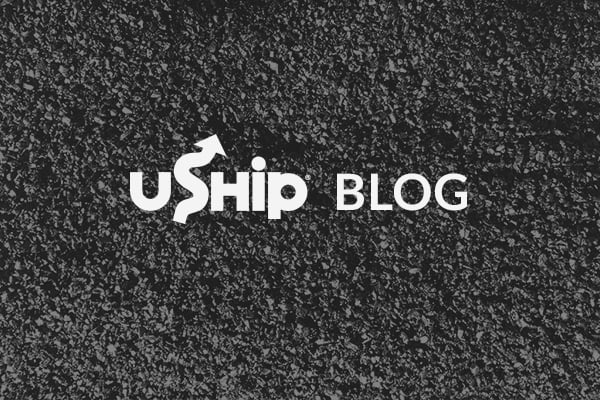By Deborah Lockridge, Editor-in-Chief, TruckingInfo.com/Heavy Duty Trucking / Three other freight-matching companies share their views on the market. / Uber Freight, an app matching owner-operators and small fleets with loads to haul, launched with much fanfare recently. Yet the use of computer technology to match up freight with trucks that can haul it is hardly new.
There are in fact already a number of load-matching apps out there. There are companies that have been load-matching for a long time, like DAT and uShip. And there are a host of newer entrants, like Convoy, Next Trucking, Trucker Path, Loadsmart, Transfix, and Doft (which is billing itself literally as an Uber for trucking.) And in fact some of the hottest companies attracting venture capital these days are promoting “Uber for trucking” apps.
Some of those companies had a bone to pick with how Eric Berdinis, product lead for Uber Freight, described how Uber Freight was different from other load-matching apps out there.
“Most of the apps that are out there might show the load, but it’s still on the carrier to pick up the phone to call to see if that load is real,” Berdinis told HDT in an interview. “A lot of times that load posted hours or days ago and someone else has taken it, but no one removed the posting. They’re really no different than the current brokerage model; there’s no ‘book it now’ button, no instant experience.”
We talked with three of these companies to find out more about how they work, how they’re similar to or different from Uber Freight, and how disruptive they think Uber Freight will be for trucking.
/
uShip
uShip was connecting loads and trucks before apps and Uber were household words. The company launched in 2004 as a desktop-based system working a bit like eBay for trucking. Now app-based, uShip still connects the guy wanting to ship his grandmother’s antique china cabinet with someone willing to transport it, but today it’s a global company. It’s used by major less-than-truckload companies and recently signed a deal with DB Schenker, one of the world’s largest logistics companies, to automate road freight in Europe.
“I think the original vision of uShip was much more of a peer-to-peer environment, kind of the sharing economy before the sharing economy was cool,” said Dean Jutilla, uShip vice president of corporate communications.
Similar to eBay, each transportation provider gets a free profile page on uShip highlighting their experience, the type of equipment, insurance, authority, photos — and their feedback rating from people and companies that have shipped with them. “That’s not something you may find with an app-based brokerage,” Jutilla noted.
At the same time, it’s focusing on working with large 3PLs and logistics companies, uShip is also working on improving the mobile experience for the both shippers and drivers, said CEO Mike Williams, “providing shippers with capabilities to book their loads, track their loads, check in on their loads, on their phone, at their deck on the dock, at home, we enable great connections. We think the truck drivers benefit from having more features pushed to them via the mobile device, so that has been a key strategy for us in 2017.”
Like Uber and Next Trucking, uShip realizes that the smallest carriers can benefit from technology that allows them to get loads easier and faster.
“Obviously, it is a fragmented industry when it comes to carriers,” Williams said “Something like 80% are less than 10 trucks. UShip is attractive to carriers in that 1 to 10 truck range because we have a good base, a good volume of shipments to be able to peruse.”
At the other end of the scale are the DB Schenker and large less-than-truckload companies. Many of the top 20 LTL carriers, Williams said, “are electronically providing rates through the uShip marketplace platform, which allows [shippers] to gain access to high quality carriers and those firms are obviously thousands of trailers.”
He also pointed out that:
- uShip is “peer to peer,” anyone with any size vehicle can sign on to be a carrier
- uShip ships everything: cars, boats, motorcycles, furniture, appliances, construction equipment, etc.
- uShip ships everywhere in the U.S., Europe, and parts of India and South America
- uShip has a lower lower cost/bidding pricing model: in comparison to Uber Freight with standardized pricing, uShip allows the bidding/negotiation of prices, which ultimately gives consumers much lower cost options.
So How Disruptive is Uber Freight? Will Uber “disrupt” trucking the way it has the taxi world?
Doft’s Salakhova noted that Uber is getting into a very complicated market, “where a lot of companies with a lot of knowledge in trucking have been already working on automation software for a while. It will take a lot of time, human and financial resources for Uber to build a successful on-demand commercial trucking service. For me, the only question is whether Uber’s investors will be patient enough to overcome all the difficulties on their way into the trucking space, or they will give up like they did with UberRush – its restaurant delivery service.”
uShip CEO Williams said of Uber Freight that, “It’s another app being introduced by a broker. There are probably 10 of those that are going to get started this week. Uber’s going to get headlines, but at the end of the day, they’re starting a brokerage and they’re using technology.” And how is that different from someone like C.H. Robinson with its Navisphere Carrier app?
“Anyone who would start a brokerage today would lead with technology,” Williams said. However, he added, “I give the company a lot of credit, it keeps everyone in this industry on our toes and reminds us that shipping and logistics is ready for more innovation, more digitalization.”
View original article
